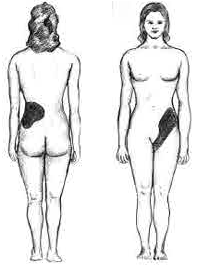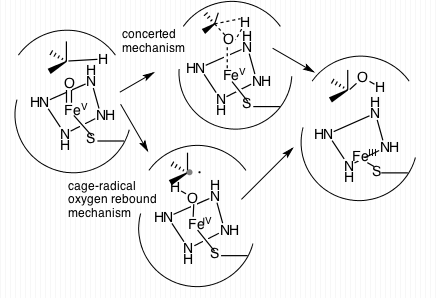|
Indinavir
Indinavir (IDV; trade name Crixivan, made by Merck) is a protease inhibitor used as a component of highly active antiretroviral therapy to treat HIV/AIDS. It is soluble white powder administered orally in combination with other antiviral drugs. The drug prevents protease from functioning normally. Consequently, HIV viruses cannot reproduce, causing a decrease in the viral load. Commercially sold indinavir is indinavir anhydrous, which is indinavir with an additional amine in the hydroxyethylene backbone. This enhances its solubility and oral bioavailability, making it easier for users to intake. It was synthetically produced for the purpose of inhibiting the protease in the HIV virus. Currently, it is not recommended for use in HIV/AIDS treatment due to its side effects. Furthermore, it is controversial for many reasons starting from its development to its usage. It was patented in 1991 and approved for medical use in 1996. Medical uses Indinavir does not cure HIV/AIDS, but ... [...More Info...] [...Related Items...] OR: [Wikipedia] [Google] [Baidu] |
Antiretroviral
The management of HIV/AIDS normally includes the use of multiple antiretroviral drugs as a strategy to control HIV infection. There are several classes of antiretroviral agents that act on different stages of the HIV life-cycle. The use of multiple drugs that act on different viral targets is known as highly active antiretroviral therapy (HAART). HAART decreases the patient's total burden of HIV, maintains function of the immune system, and prevents opportunistic infections that often lead to death. HAART also prevents the transmission of HIV between serodiscordant same sex and opposite sex partners so long as the HIV-positive partner maintains an undetectable viral load. Treatment has been so successful that in many parts of the world, HIV has become a chronic condition in which progression to AIDS is increasingly rare. Anthony Fauci, head of the United States National Institute of Allergy and Infectious Diseases, has written, "With collective and resolute action now and a st ... [...More Info...] [...Related Items...] OR: [Wikipedia] [Google] [Baidu] |
Kidney Stone
Kidney stone disease, also known as nephrolithiasis or urolithiasis, is a crystallopathy where a solid piece of material (kidney stone) develops in the urinary tract. Kidney stones typically form in the kidney and leave the body in the urine stream. A small stone may pass without causing symptoms. If a stone grows to more than , it can cause blockage of the ureter, resulting in sharp and severe pain in the lower back or abdomen. A stone may also result in blood in the urine, vomiting, or painful urination. About half of people who have had a kidney stone will have another within ten years. Most stones form by a combination of genetics and environmental factors. Risk factors include high urine calcium levels, obesity, certain foods, some medications, calcium supplements, hyperparathyroidism, gout and not drinking enough fluids. Stones form in the kidney when minerals in urine are at high concentration. The diagnosis is usually based on symptoms, urine testing, and me ... [...More Info...] [...Related Items...] OR: [Wikipedia] [Google] [Baidu] |
CYP3A4
Cytochrome P450 3A4 (abbreviated CYP3A4) () is an important enzyme in the body, mainly found in the liver and in the intestine. It oxidizes small foreign organic molecules ( xenobiotics), such as toxins or drugs, so that they can be removed from the body. It is highly homologous to CYP3A5, another important CYP3A enzyme. While many drugs are deactivated by CYP3A4, there are also some drugs which are ''activated'' by the enzyme. Some substances, such as some drugs and furanocoumarins present in grapefruit juice, interfere with the action of CYP3A4. These substances will therefore either amplify or weaken the action of those drugs that are modified by CYP3A4. CYP3A4 is a member of the cytochrome P450 family of oxidizing enzymes. Several other members of this family are also involved in drug metabolism, but CYP3A4 is the most common and the most versatile one. Like all members of this family, it is a hemoprotein, i.e. a protein containing a heme group with an iron atom. In humans, ... [...More Info...] [...Related Items...] OR: [Wikipedia] [Google] [Baidu] |
Protease Inhibitor (pharmacology)
Protease inhibitors (PIs) are medications that act by interfering with enzymes that cleave proteins. Some of the most well known are antiviral drugs widely used to treat HIV/AIDS and hepatitis C. These protease inhibitors prevent viral replication by selectively binding to viral proteases (e.g. HIV-1 protease) and blocking proteolytic cleavage of protein precursors that are necessary for the production of infectious viral particles. Protease inhibitors that have been developed and are currently used in clinical practice include: * Antiretroviral HIV-1 protease inhibitors—class stem ** Amprenavir ** Atazanavir ** Darunavir ** Fosamprenavir ** Indinavir ** Lopinavir ** Nelfinavir ** Ritonavir ** Saquinavir ** Tipranavir * Hepatitis C virus NS3/ 4A protease inhibitors—class stem ** Asunaprevir ** Boceprevir ** Grazoprevir ** Glecaprevir ** Paritaprevir ** Simeprevir ** Telaprevir * Severe acute respiratory syndrome coronavirus 2 3-chymotrypsin-like prote ... [...More Info...] [...Related Items...] OR: [Wikipedia] [Google] [Baidu] |
Atazanavir
Atazanavir, sold under the brand name Reyataz among others, is an antiretroviral medication used to treat HIV/AIDS. It is generally recommended for use with other antiretrovirals. It may be used for prevention after a needlestick injury or other potential exposure (postexposure prophylaxis (PEP)). It is taken by mouth once a day. Common side effects include headache, nausea, yellowish skin, abdominal pain, trouble sleeping, and fever. Severe side effects include rashes such as erythema multiforme and high blood sugar. Atazanavir appears to be safe to use during pregnancy. It is of the protease inhibitor (PI) class and works by blocking HIV protease. Atazanavir was approved for medical use in the United States in 2003. It is on the World Health Organization's List of Essential Medicines. As of 2017 there is a generic version available in the United States manufactured by Teva Pharmaceuticals Medical uses Atazanavir is used in the treatment of HIV. The efficacy of atazan ... [...More Info...] [...Related Items...] OR: [Wikipedia] [Google] [Baidu] |
Darunavir
Darunavir (DRV), sold under the brand name Prezista among others, is an antiretroviral medication used to treat and prevent HIV/AIDS. It is generally recommended for use with other antiretrovirals. It is often used with low doses of ritonavir or cobicistat to increase darunavir levels. It may be used for prevention after a needlestick injury or other potential exposure. It is taken by mouth once to twice a day. Common side effects include diarrhea, nausea, abdominal pain, headache, rash and vomiting. Severe side effects include allergic reactions, liver problems, and skin rashes such as toxic epidermal necrolysis. While poorly studied in pregnancy it appears to be safe for the baby. It is of the protease inhibitor (PI) class and works by blocking HIV protease. Developed by pharmaceutical company Tibotec, darunavir is named after Arun K. Ghosh, the chemistry professor who discovered the molecule at the University of Illinois at Chicago. It was approved by the Food and Drug A ... [...More Info...] [...Related Items...] OR: [Wikipedia] [Google] [Baidu] |
NRTI
Reverse-transcriptase inhibitors (RTIs) are a class of antiretroviral drugs used to treat HIV infection or AIDS, and in some cases hepatitis B. RTIs inhibit activity of reverse transcriptase, a viral DNA polymerase that is required for replication of HIV and other retroviruses. Mechanism of action When HIV infects a cell, reverse transcriptase copies the viral single stranded RNA genome into a double-stranded viral DNA. The viral DNA is then integrated into the host chromosomal DNA, which then allows host cellular processes, such as transcription and translation, to reproduce the virus. RTIs block reverse transcriptase's enzymatic function and prevent completion of synthesis of the double-stranded viral DNA, thus preventing HIV from multiplying. A similar process occurs with other types of viruses. The hepatitis B virus, for example, carries its genetic material in the form of DNA, and employs an RNA-dependent DNA polymerase to replicate. Some of the same compounds used as RTIs ... [...More Info...] [...Related Items...] OR: [Wikipedia] [Google] [Baidu] |
Treatment Action Group
Treatment Action Group (TAG) is a U.S.-based organization that has been prominent within the movement of HIV/AIDS activism. Being formed in 1991, it has possessed the goals of working with worldwide efforts to increase research on treatments for HIV and for deadly co-infections that affect individuals with HIV, such as hepatitis C and tuberculosis, as well as spur on greater access to and efficient usage of already available treatments. The group additionally monitors research on a possible HIV vaccine and on fundamental science aimed at understanding the pathogenesis of HIV/AIDS. History The Treatment Action Group had its origins in the AIDS activist organization, ACT UP New York. In January 1992, members of the Treatment and Data Committee of ACT UP left the parent group to create a non-profit organization focused on accelerating treatment research.Harrington, Mark. Interview with Sarah Schulman and Jim Hubbard. ACTUP Oral History Project. 16 February 2005. MIX: The New York Lesb ... [...More Info...] [...Related Items...] OR: [Wikipedia] [Google] [Baidu] |
Creatinine Clearance
Assessment of kidney function occurs in different ways, using the presence of symptoms and signs, as well as measurements using urine tests, blood tests, and medical imaging. Functions of a healthy kidney include maintaining a person's fluid balance, maintaining an acid-base balance; regulating electrolytes including sodium, potassium, and other electrolytes; clearing toxins; regulating blood pressure; and regulating hormones, such as erythropoietin; and activation of vitamin D. Introduction The functions of the kidney include maintenance of acid-base balance; regulation of fluid balance; regulation of sodium, potassium, and other electrolytes; clearance of toxins; absorption of glucose, amino acids, and other small molecules; regulation of blood pressure; production of various hormones, such as erythropoietin; and activation of vitamin D. Much of renal physiology is studied at the level of the nephron, the smallest functional unit of the kidney. Each neph ... [...More Info...] [...Related Items...] OR: [Wikipedia] [Google] [Baidu] |
Food And Drug Administration
The United States Food and Drug Administration (FDA or US FDA) is a federal agency of the Department of Health and Human Services. The FDA is responsible for protecting and promoting public health through the control and supervision of food safety, tobacco products, caffeine products, dietary supplements, prescription and over-the-counter pharmaceutical drugs (medications), vaccines, biopharmaceuticals, blood transfusions, medical devices, electromagnetic radiation emitting devices (ERED), cosmetics, animal foods & feed and veterinary products. The FDA's primary focus is enforcement of the Federal Food, Drug, and Cosmetic Act (FD&C), but the agency also enforces other laws, notably Section 361 of the Public Health Service Act, as well as associated regulations. Much of this regulatory-enforcement work is not directly related to food or drugs, but involves such things as regulating lasers, cellular phones, and condoms, as well as control of disease in contexts v ... [...More Info...] [...Related Items...] OR: [Wikipedia] [Google] [Baidu] |
Renin
Renin (etymology and pronunciation), also known as an angiotensinogenase, is an aspartic protease protein and enzyme secreted by the kidneys that participates in the body's renin–angiotensin–aldosterone system (RAAS)—also known as the renin–angiotensin–aldosterone axis—that increases the volume of extracellular fluid (blood plasma, lymph and interstitial fluid) and causes arterial vasoconstriction. Thus, it increases the body's mean arterial blood pressure. Renin is not commonly referred to as a hormone, albeit it having a receptor, the (pro)renin receptor, also known as the renin receptor and prorenin receptor (see also below), as well as enzymatic activity with which it hydrolyzes angiotensinogen to angiotensin I. Biochemistry and physiology Structure The primary structure of renin precursor consists of 406 amino acids with a pre- and a pro-segment carrying 20 and 46 amino acids, respectively. Mature renin contains 340 amino acids and has a mass of 37 kDa. ... [...More Info...] [...Related Items...] OR: [Wikipedia] [Google] [Baidu] |



200mg.jpg)

.jpg)